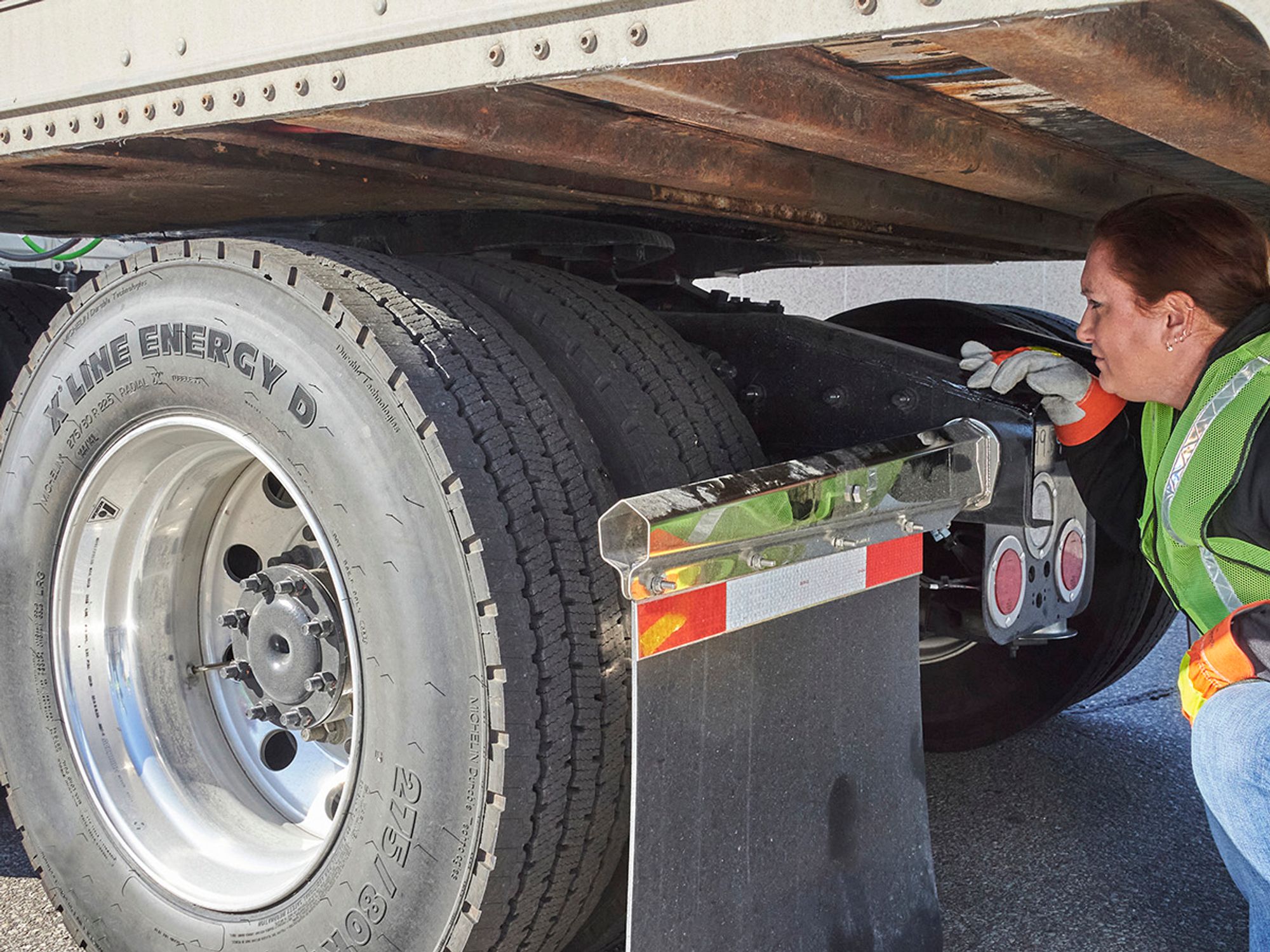Post-trip CMV inspections

- Except for certain driveaway-towaway operations, the Federal Motor Carrier Safety Regulations (FMCSRs) do not require post-trip inspection of commercial motor vehicles (CMVs), but they do require documentation and repair of safety-related defects.
- Drivers may be required to complete a driver’s vehicle inspection report (DVIR) after a trip if there is a safety-related defect to report.
- Drivers engaged in driveaway-towaway operations with combination vehicles must disassemble and inspect the towbars and saddle-mounts after each trip, looking for any worn, bent, cracked, broken, or missing parts.
Except for certain driveaway-towaway operations, the FMCSRs do not require post-trip CMV inspections. The rules, however, require the documenting and repairing of any safety-related defects. In addition, motor carriers typically require — and enforcement personnel typically expect — drivers to inspect their vehicles thoroughly when they’re done driving for the day.
Post-trip defect reporting
Drivers may be required to complete a post-trip inspection report — also known as a DVIR — when they’re done operating a commercial motor vehicle for the day.
Section 396.11 says the report must be prepared in writing “at the completion of each day’s work on each vehicle operated.” However, a DVIR is required only when there is a safety-related defect to report (although companies can require a daily DVIR as a matter of policy). Having drivers prepare a DVIR every day (whether there is a defect to report or not) is seen as a “best practice” to help ensure that inspections are being performed and risk is being minimized.
When a driver undergoes a roadside inspection and the inspector records a vehicle defect, the driver must add that defect to that day’s DVIR (unless the defect is fixed before the end of the day) so that it gets repaired before the vehicle is driven again.
The report must cover at least the following parts and accessories (though the DVIR itself does not need to contain this list):
- Service brakes, including trailer brake connection
- Parking brake
- Steering mechanism
- Lighting devices and reflectors
- Tires
- Horn
- Windshield wiper(s)
- Rear vision mirror(s)
- Coupling devices
- Wheels and rims
- Emergency equipment
DVIR elements
No specific format is required, but the DVIR must have certain elements:
- The date and vehicle identification;
- A list of any vehicle defects or deficiencies that would affect safe operation or result in a breakdown;
- A way for the driver to indicate that there are no defects or deficiencies; and
- Spaces for three signatures, for:
- The driver who prepared the report;
- The motor carrier or its mechanic or other agent, to certify that the reported defects have been fixed or don’t need to be fixed; and
- The reviewing driver’s signature on reports listing defects or deficiencies, to acknowledge that repairs were made or not needed.
Based on the above, completed DVIRs should have either:
- One signature, when there are no defects to report; or
- Three signatures, when there is a defect to report.
Motor carriers must maintain the original of each vehicle inspection report and certification of repairs for at least three months.
Exceptions
Post-trip inspection reports are not required of:
- Non-business, private motor carriers of passengers;
- Driveaway-towaway operations; or
- Motor carriers operating only one motor vehicle.
Driveaway-towaway operations
Drivers engaged in driveaway-towaway operations with combination vehicles must disassemble and inspect the towbars and saddle-mounts after each trip, looking for any worn, bent, cracked, broken, or missing parts. Before a defective towbar or saddle-mount is used again, the motor carrier must repair or replace it.
